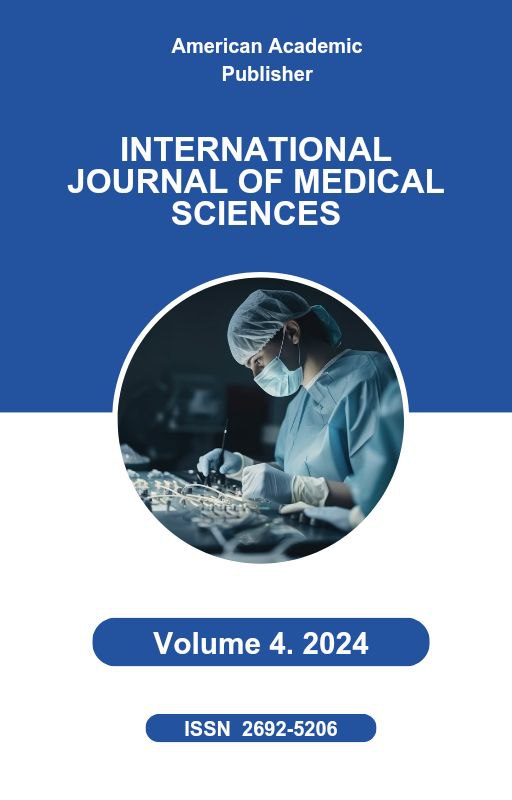 Articles
| Open Access |
https://doi.org/10.55640/
Articles
| Open Access |
https://doi.org/10.55640/
A COMPREHENSIVE ECONOMIC EVALUATION OF MODERN VARICOSE VEIN TREATMENT MODALITIES
Minavarkhujayev Ravshankhuja Raxmatkhuja ugli , Assistant of department General surgery №2, Tashkent Medical Academy Phlebologist at the "VarikozOFF" ClinicAbstract
Varicose veins are a prevalent manifestation of chronic venous disease (CVD) and a significant source of morbidity and healthcare costs globally. Historically, surgical ligation and stripping were the mainstay treatments. However, the past two decades have seen the rise of minimally invasive interventions such as endovenous thermal ablation (laser or radiofrequency), sclerotherapy (foam or liquid), and non-thermal, non-tumescent techniques (cyanoacrylate closure, mechanochemical ablation). These procedures differ not only in clinical outcomes—like vein closure rates and patient satisfaction—but also in cost profiles, resource utilization, and cost-effectiveness. This comprehensive review explores the economic burden of varicose veins and analyzes the cost-effectiveness of contemporary treatment options. By synthesizing the available literature and economic studies, this review provides valuable insights for clinicians, policymakers, and payers involved in managing venous disease. The article highlights key methodologies for cost-effectiveness analysis, compares direct and indirect costs, and discusses how different healthcare settings influence cost evaluations. While most interventions have demonstrated favorable cost-effectiveness relative to surgery, nuances remain in areas such as long-term recurrence, the influence of patient comorbidities, and evolving device costs.
Keywords
References
Rabe E, Pannier F. Clinical, aetiological, anatomical and pathological classification of chronic venous disorders: the CEAP classification. Phlebology. 2012;27(Suppl 1):2-9.
Gloviczki P, Comerota AJ, Dalsing MC, et al. The care of patients with varicose veins and associated chronic venous diseases: clinical practice guidelines of the Society for Vascular Surgery and the American Venous Forum. J Vasc Surg. 2011;53(5 Suppl):2S-48S.
Nesbitt C, Bedenis R, Bhattacharya V, Stansby G. Endovenous ablation (radiofrequency and laser) and foam sclerotherapy versus open surgery for great saphenous varicose veins. Cochrane Database Syst Rev. 2014;(7):CD005624.
van den Bos R, Arends L, Kockaert M, Neumann M, Nijsten T. Endovenous therapies of lower extremity varicosities: a meta-analysis. J Vasc Surg. 2009;49(1):230-239.
National Institute for Health and Care Excellence (NICE). Varicose veins in the legs: the diagnosis and management of varicose veins. Clinical guideline [CG168]. 2013. https://www.nice.org.uk/guidance/cg168
Tisi PV, Beverley C, Rees A. Injection sclerotherapy for varicose veins. Cochrane Database Syst Rev. 2016;(11):CD001732.
Kalogirou TE, Shepherd AC, Giannoukas AD. Surgical correction of great saphenous vein insufficiency vs endovenous laser ablation: a cost-effectiveness analysis based on a randomized clinical trial. J Vasc Surg. 2017;66(4):1232-1240.
Stuart WP, Zamora J, et al. Economic impact of varicose veins in the United States. Phlebology. 2020;35(10):778-785.
Morrison N, Gibson K, McEnroe S, Goldman M, King T, Weiss R. Randomized trial comparing endovenous laser ablation and radiofrequency ablation of the great saphenous vein: a clinical and cost-effectiveness analysis. Phlebology. 2015;30(2):106-115.
Gohel MS, Epstein D, et al. Cost-effectiveness of laser and foam sclerotherapy versus surgery for the treatment of varicose veins. Br J Surg. 2010;97(12):1815-1823.
Brittenden J, Cotton SC, et al. A randomized trial comparing treatments for varicose veins. N Engl J Med. 2014;371(13):1218-1227.
Lam YL, et al. Endovenous laser ablation of the great saphenous vein: a prospective cost-effectiveness study in daily practice. Int Angiol. 2019;38(6):474-481.
Deijen CL, Kockaert MA, et al. Cost-effectiveness of ultrasound-guided foam sclerotherapy, endovenous laser ablation, and conventional surgery for the treatment of great saphenous varicose veins: a modeling study. Phlebology. 2016;31(2):127-135.
Todd KL, Wright DI. The VANISH-2 study: a randomized, blinded, placebo-controlled study of varithena (polidocanol endovenous microfoam) compared with placebo for symptomatic varicose veins. J Vasc Surg: Venous and Lymphatic Disorders. 2015;3(3):321-330.
Rasmussen LH, Lawaetz M, et al. Randomized trial comparing cyanoacrylate closure, radiofrequency, and laser for varicose veins. J Vasc Surg: Venous and Lymphatic Disorders. 2018;6(3):355-363.
Article Statistics
Downloads
Copyright License

This work is licensed under a Creative Commons Attribution 4.0 International License.

